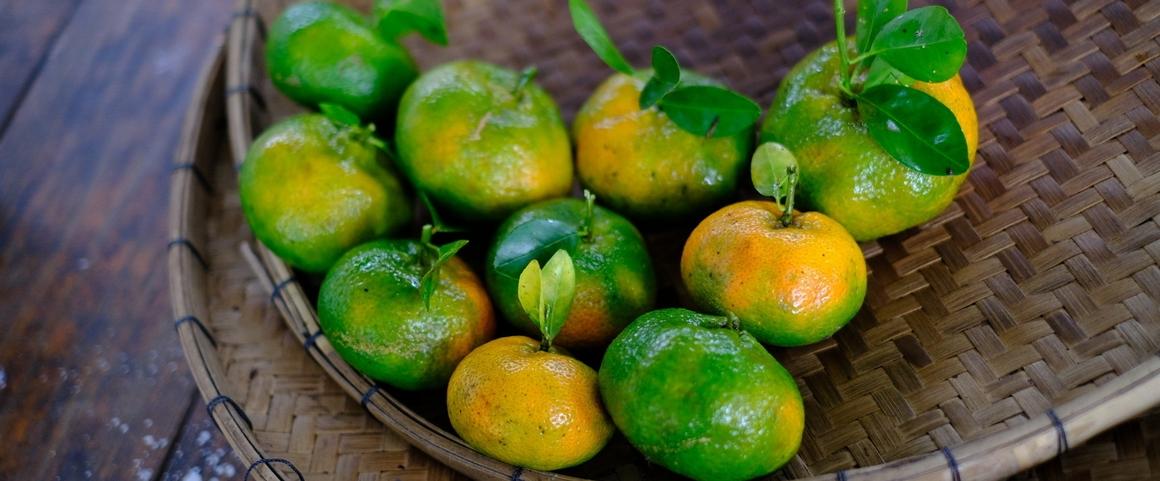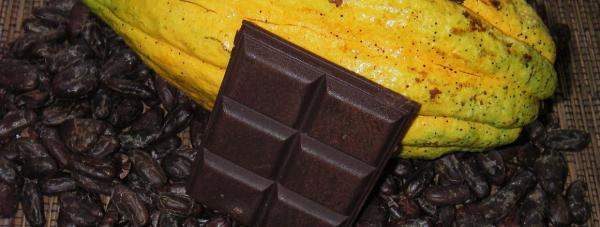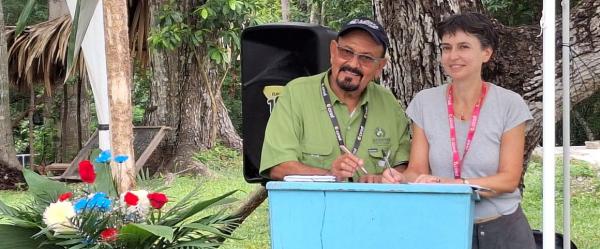Science at work 16 December 2025
- Home
- Press area
- Press releases
- The citrus value chain and Huanglongbing
The citrus value chain and yellow dragon disease

Mandarins grown in the Kintamani region (Bali, Indonesia) © A. Rival, CIRAD
HLB originated in Southeast Asia, and spread rapidly through the Caribbean and South America in the 2000s. The main citrus producing countries and regions, namely China, Florida (USA) and Brazil, have been severely affected, pushing global production down and prices up. The Mediterranean is the world's leading small citrus fruit (orange and lemon) producer, and also fears the arrival of the bacterium, since although the disease has not yet been detected in the region, the Asian citrus psyllid – the HLB vector insect – is already present (see the zones in which the disease and/or psyllid have been seen).
Guadeloupe is leading the hunt for varietal solutions
Citrus production in Guadeloupe, estimated at around 6000 tonnes in 2005, fell by 60% in a mere few years, following the detection of HLB on the island. The rapid spread of the disease, its aggressive nature and the lack of control methods obliged several citrus producers to abandon the value chain in favour of other fruit species. As a result, citrus imports into Guadeloupe increased sixfold between 2010 and 2020.
Of the more than 400 analyses on the island from 2012 onwards as part of the Tropicsafe project, 60% of trees tested were infected with HLB. For Raphaël Morillon, molecular physiologist and project leader for CIRAD, stopping the disease is no longer enough: "As things stand, the only truly effective method is to grub up sick trees and replace them with certified healthy plants, and then treat the area with insecticides to stop the psyllid returning. This has been done in Brazil. The only snag is that this method has a significant environmental impact and is largely unsustainable. In Guadeloupe, CIRAD has turned to other solutions, for instance bringing in new varieties more tolerant of the disease and new cropping systems".
Varieties replanted in agroecological or organic systems
With its partners, within a range of projects*, CIRAD has worked in the field in Guadeloupe to test rootstocks of new lime, mandarin, pumelo and orange varieties for their tolerance of the disease. "With these varieties, we are testing two types of crop management sequences", says Raphaël Morillon. "A sustainable system using fewer inputs and zero pesticides, and an organic system**. Our results show that combining innovative planting material and appropriate cropping practices keeps the trees alive and enables fruit production over a period of at least seven years."
Around 10% of the area initially given over to citrus growing in Guadeloupe is currently being replanted with certified healthy planting material. Larger-scale trials are under way with several farmers***. "However, a lot of work is still needed to help farmers grow these varieties, notably in terms of irrigation and fertilization, if we are to return to satisfactory production levels."
New resistant varieties thanks to the finger lime?
The next step is to develop resistant varieties. Scientists' hopes rest partly in using certain citrus species from Oceania, such as the finger lime, which is totally resistant to the disease. "We are looking to create fully HLB-resistant varieties and rootstocks, by crossing those resistant citrus varieties with rootstocks or traditional cultivars, such as oranges, mandarins, lemons, grapefruits, etc. To pinpoint resistance genes in the parents of future varieties, we are looking into the substantial genetic diversity of citrus fruits", Patrick Ollitrault, a geneticist and CIRAD correspondent for the Horizon 2020 preHLB project, within which this work is being done. In the long term, PreHLB aims to roll out this type of varietal solution in order to manage the disease while limiting the risk of its introduction and spread through orchards in Europe. Monitoring is also being stepped up.
* Tropicsafe (Horizon 2020), Parade-HLB (EAFRD), Life Vida for Citrus and CAVALBIO (ERDF)
** under the INGA project (EAFRD)
*** under the VEDET project (EAFRD)
With the almost simultaneous arrival of the disease in North and South America in the mid-2000s, the large citrus-growing sectors in Florida and Brazil were drastically affected. Falling yields, along with the cost of repairing plots, triggered a rapid increase in orange juice concentrate prices, which doubled despite a drop in demand. Florida is still the zone most severely affected by the disease. Since HLB was detected in 2005, it has lost 150 000 hectares of orchards, and output has fallen by more than seven million tonnes.
There are fears of the same thing happening on the fresh citrus market. Moreover, the upward price trend could be exacerbated by the Russia-Ukraine crisis, due to increased oil-based input prices.



























